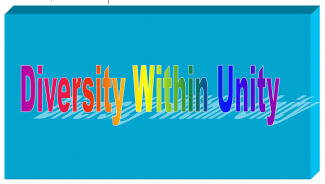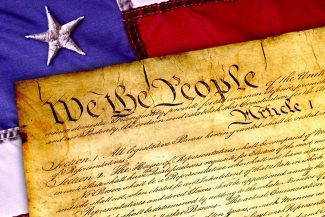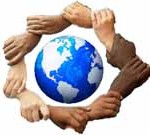Discussion with Henry Shelton, Life Coach
QUESTION from Ohio: Conversations on racists
“I know that I have always felt that we are all created equal. I just need and want to be able to talk with people from other races and find out their experiences with racists, something I have never had to experience because I am white who was raised to believe that it is not the color of your skin but the character of the person that matters. How can I do that? RESPONSE:
 You are to be commended for having a desire to empathize with and understand the pains of your fellow humans. This is a great start in understanding the greater truth of this issue of “race” and “racism”. But before we address the how of having a conversation with people from other races, let’s take a scientific and historical look at this notion of races. We will attempt to get beyond the simplistic characterization of people based on the nomenclature and use of primary colors to classify a group of people. However, for this discussion, the focus will be from the perspective of the use of the phrase color of skin since our member specifically raised this matter. My hope is through a more informed perspective, we can begin to play a role in evolving and transforming the erroneous and man-made notions of races to improve human relations for future generations.
You are to be commended for having a desire to empathize with and understand the pains of your fellow humans. This is a great start in understanding the greater truth of this issue of “race” and “racism”. But before we address the how of having a conversation with people from other races, let’s take a scientific and historical look at this notion of races. We will attempt to get beyond the simplistic characterization of people based on the nomenclature and use of primary colors to classify a group of people. However, for this discussion, the focus will be from the perspective of the use of the phrase color of skin since our member specifically raised this matter. My hope is through a more informed perspective, we can begin to play a role in evolving and transforming the erroneous and man-made notions of races to improve human relations for future generations.
Despite how we were raised and what we were taught from our parents, family, and community; at some point to make this world a better place as world citizens, we must embrace and adopt the responsibility of becoming a part of the global solution. As a start and to gain insight on this most recent perspective of race, let’s take a quick trip back in time.
The ultimate goal is to dispel the notion that you are white and others say black, brown, or yellow! As naive as the assignment of this terminology of white or black is (sort of akin to giving a first grader a way of identifying or discerning the difference between humans based on primary colors) in the end, it presents complications in having a decent and informed conversation with our fellow humans. So, perhaps there is a more evolved and enlightened approach that would render having these conversations easier. Follow if you would a journey that takes us back over 3.2 million years ago.
 It could be argued that humanity has always observed differences in our fellow humans since Lucy; the first female homo Australopithecus ancestor who roamed the land of Alkebulan (modern-day Africa) around the Great Lakes region in what we now call Ethiopia. As a fast track through the evolutionary history of humanity, as time passed homo Australopithecus certainly was looked upon by homo Erectus in an odd way. Then came the clash and difference in homo Erectus with homo Sapien.
It could be argued that humanity has always observed differences in our fellow humans since Lucy; the first female homo Australopithecus ancestor who roamed the land of Alkebulan (modern-day Africa) around the Great Lakes region in what we now call Ethiopia. As a fast track through the evolutionary history of humanity, as time passed homo Australopithecus certainly was looked upon by homo Erectus in an odd way. Then came the clash and difference in homo Erectus with homo Sapien.
With the great migration of homo Erectus/sapiens out of the Great Lake region of Africa into what is now referred to as Europe, another great clash was about to take place. This clash (between homo Sapien (Neanderthal) and homo Sapien Sapien or modern-day humans), would prove so divergent and complex in scope, that it indeed set the stage for this modern so-called definition of what we call the races of humanity.
Consider the prevailing scientific fact that all of humanity originated in and migrated out of Africa from the great lakes’ region millions of years ago. Then let’s fast forward to the period between 100,000-12,000 years ago during the last ice age. During the Würm ice age, the humans of Alkebulan (modern-day Africa), who found themselves north of the 51st parallel in Europe had to adapt to the harsh climate of that region. At times and for millennia temperatures reached an average of 200 degrees below zero, causing the humans to retreat into caves to find safety and shelter. This went on for, not days, not years, not even decades or centuries, but millennia! For thousands of years the human body, through various laws of nature, genetically morphed and mutated to adjust and survive the extremely cold days and nights of that climate.
Science informs us that according to Gloger’s law or rule, that any mammal living in warm arid climates near the equator tend to be darker-pigmented than populations originating farther from the equator. Scientific reason follows then, that in the case of the need to spend generations seeking safety and shelter in dark caves, the converse is necessarily true.
So, after generations and generations spanning millennia, when the ice thawed and the grounds warmed again, Homo Sapien met Homo Sapien Sapien for the first time, and for sure there was a recognition if not a shock in the significant difference in their outer bodily pigmentation and other features. Amid this great clash, there was interbreeding as well as mass infighting and eventual extinction of Neanderthal. The surviving Homo Sapien Sapien would go on to become what we call a modern-day human with the myriad of hues and differences which we have mistakenly come to refer to as races.
Fast forward to North America, late seventeenth century, to an incident in 1676 known as Bacon’s Rebellion. During this time, aside from skirmishes between Native Americans, and the arrival of the Europeans seeking solace in a land foreign to them, human society lived in relative unity in their various communities. However, once this community came together and rebelled against the state government, the European Parliament responded with retaliatory measures that were so inequitable and divisive in scope, that they would tragically define the character of our nation well into the twenty-first century! The rebellion involved a coalition of indentured servants of both European and African descent, including enslaved Africans, who joined the coalition in exchange for their freedom. This collaboration frightened the ruling class planters and hastened the hardening of racial lines dealing with slavery. Measures were quickly put in place to abandon the heavy reliance on indentured servants in favor of the importation of more slaves from Africa.
These measures soon became laws that resulted in an agreement between the European Parliament, the ruling class of the new Virginia colony, and the newly formed colonial government. These new laws assigned certain rights to this newly created class of people from the European countries; to the exclusion of other Americans from other countries, under the definition and classification of white Americans. The increased importation of African slaves soon led to all citizens of African descent to be classified as black inhabitants. By permanently enslaving Virginians of African descent and giving poor white indentured servants and farmers some new rights and privileges, the ruling elite hoped to separate the two groups and make it less likely that they would unite again in rebellion.
At this point according to law, four prevailing rights and privileges were pronounced that initiated a great divide in the liberty and subsequent rights and equities of the remaining American citizens of African, Asian, and Latin American descent. Among them were:
1) No one could legally own a gun unless you were a white
2) No one could become an American citizen unless you were white
3) No other citizen could bring legal court actions against a white citizen, and
4) No other citizen of non-European origin could marry a white citizen
The process and practice of discrimination against citizens of other countries of origin outside of European ancestry were thus started and ultimately integrated into law and culture to become the underlying fabric of this new nation. The rest of this story has been pretty well documented in the history of the birth of our nation. This includes the drafting of the U.S. Constitution in 1776 and its clause that designated African- Americans as three-fifths of a human.
 Approximately one hundred years later from 1865 to 1870 the Reconstruction (thirteenth, fourteenth, and fifteenth) Amendments to the constitution abolished slavery, established citizenship and equal protection under the law, and prohibited discrimination in voting rights regardless of a citizen’s race, color, or previous condition of servitude. Although it would take another approximately hundred years for the Civil Rights Act of 1964 before African-American citizens were able to gain legal full protection under the law to exercise these constitutional rights. Yet, despite the Civil Rights Act, here we are as a nation over a half a century later, and the institutionalization of racism still hampers true freedom, liberty, and equal justice for all citizens.
Approximately one hundred years later from 1865 to 1870 the Reconstruction (thirteenth, fourteenth, and fifteenth) Amendments to the constitution abolished slavery, established citizenship and equal protection under the law, and prohibited discrimination in voting rights regardless of a citizen’s race, color, or previous condition of servitude. Although it would take another approximately hundred years for the Civil Rights Act of 1964 before African-American citizens were able to gain legal full protection under the law to exercise these constitutional rights. Yet, despite the Civil Rights Act, here we are as a nation over a half a century later, and the institutionalization of racism still hampers true freedom, liberty, and equal justice for all citizens.
This historical narrative offers facts that are not always commonly known for all parties. On the question of how can I…talk with people from other races and find out their experiences with racism, it helps if each person is informed about the historical facts of race and racism. Once a person is empowered with factual knowledge, then having a conversation with people of other races becomes much easier as the person gets that you understand them and the issues. Speaking from facts also allows us to ultimately remove polarizing opinions that oft-times devolve into arguments. If we are to truly transform our society and make this a better world, we must each commit ourselves to gain a factual understanding of the issue at hand. Then we can acknowledge and embrace the fact that we are one human race and that, in the words of Dr. Martin Luther King, Jr; “…justice is indivisible; injustice anywhere is a threat to justice everywhere!”
 As a practical exercise, it is suggested that we daily visualize, in our mind’s eye, the ideal world that we would like to see manifested. Hold this vision in your mind and also determine who you are being in the global equation and what role you are playing to make the world a better place. This could be something as simple as reaching out to a stranger in a coffee shop to have a dialogue about race and racism from a new and more enlightened perspective or joining an organization of your choice that has as their mission the good that you want to see in the world. And lastly, begin daily to show up in the world and be the change and transformation that you want to see in the world. If you practice this daily, you’ll be amazed at how you will begin to realize and affect change in self and the world around you. Then there will come a moment when having seemingly difficult conversations with individuals who may appear different than ourselves becomes much easier, authentic, and effective.
As a practical exercise, it is suggested that we daily visualize, in our mind’s eye, the ideal world that we would like to see manifested. Hold this vision in your mind and also determine who you are being in the global equation and what role you are playing to make the world a better place. This could be something as simple as reaching out to a stranger in a coffee shop to have a dialogue about race and racism from a new and more enlightened perspective or joining an organization of your choice that has as their mission the good that you want to see in the world. And lastly, begin daily to show up in the world and be the change and transformation that you want to see in the world. If you practice this daily, you’ll be amazed at how you will begin to realize and affect change in self and the world around you. Then there will come a moment when having seemingly difficult conversations with individuals who may appear different than ourselves becomes much easier, authentic, and effective.
